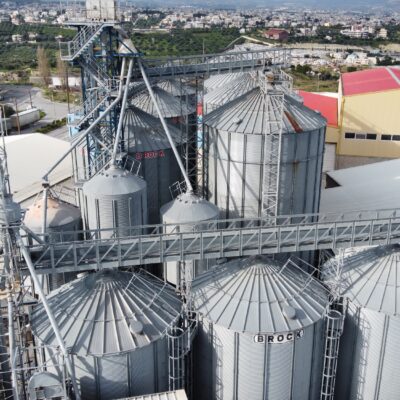News

Chemical Manufacturer Upgrades Critical Systems
A midwestern US chemical plant plays an integral part of the worldwide supply of stock for animal feed, refined human vegetable oils, and various other products. This family-owned operation has been a powerhouse in soybean processing, specifically, for more than half a century. As such, their processing areas for that product specifically are considered the epitome of “critical” and run year-round with only a single annual shutdown to handle most large-scale maintenance and upgrade projects.
As this plant looked to install the first ever automation to their critical extraction and shared cooler areas, they knew that this would be a large-scale project that would encompass a multitude of equipment and trades and that the installation would span several years. This project would require partners who could handle the technical scope as well as the extended and complex project management.
An overarching project scope and general timeline were developed. Then the plan was refined to address both annual budgets for finance and realistic commissioning capacity within the shutdown window offered each year. Careful consideration had to be given to the details of the plan as well as to the impact this update would have on the area’s operators. This was not a typical automation upgrade that builds upon the concepts included in a legacy control system as the existing system was fully hard-wired and hard-plumbed: this system would be the initial control system in this area and in which many of the operators would experience. Phased implementation and manageable steps would be critical to allow the client’s valued staff to make the required leap to the new controls.
An automation hardware partner was needed who had a track record for longevity and an ability to deliver in difficult times so a solution based on Rockwell Automation’s ControlLogix platform was designed. A redundant Ethernet network was designed that will ensure that all areas of the plant are available for supervisory control via multiple physical paths. The redundant FactoryTalk View SE supervisory control (SCADA), which leverages PlantPAx Process Objects, provides the same level of availability and peace of mind at the software level. Detailed design included the use of full communication Ethernet variable frequency drives (VFDs), brand new critical instrumentation, intrinsically safe I/O to connect into the classified manufacturing areas, and purged human/machine interface (HMI) terminals for use in the same explosionproof rooms.
An entirely new control equipment room was designed and constructed within their facility. The systems’ large control enclosures would be designed and built all within the initial project year so that they could be installed during the construction of the room. Subsequent phases of the project were and will continue to be deployed upon this foundation.
Each year’s refinement on the original scheme includes updates for related systems that might have changed since the plan’s inception. Project manager Ryan Muller meets regularly with the client to stay abreast of site plans and additional considerations. He also supplies detailed reporting on the overall development and scheduling for the current and downstream phases of the project. The project’s annual budget is at the forefront of the regular discussions as well. “This customer has been excellent to work with,” he says. “No doubt the overall scope has changed since we started this a few years ago but the open lines of communication have allowed us to collaborate on desired changes and tackle the updates in a pragmatic way. There’s a mutual trust between our companies and everyone is comfortable that all teammates on this are pushing to a common positive outcome,” he continues.
Also considered each year are nuances based on availability of hardware and the required trades and associated installation teams. The foresight to front-load most of the system hardware has left the project largely immune from current equipment shortages with only a few small exceptions. With the advanced planning, neither hardware nor the availability of manpower have had a negative impact on the overall schedule which is truly uncommon in current times.
Both parties have experienced benefits not planned for at the inception of this project. “The end customer hoped to achieve better control and visibility of the overall process, which they have”, says Muller. “They’ve also reduced their overall startup time for the complex operation by 1/3 to 1/2 and that is a huge financial gain when you’re talking about products and materials as valuable as theirs included in an operation that spans multiple shifts to fully start”. New scope items have included the addition of a Historian system and cleanup of issues found in software implemented by others
The project has passed the projected halfway mark and is proceeding according to plan. The initial years’ successes and improved control have convinced the end client of the value of the endeavor to the point they add new, ancillary equipment with each subsequent phase. “The operators are fully invested, and it shows in how well the system starts, runs, and shuts down, when necessary,” says Muller. “The end client trusts now to connect related systems and so the operators feel a little like they’re driving the design, which only serves to further immerse them in the project and operation, he added.
This project has benefitted from a strong team, robust technical design, and methodical approach to the extended timeline. Thus far each phase has been a success and indications are that future phases will roll out similarly.
Posted In: Case Studies, Chemical Industry
